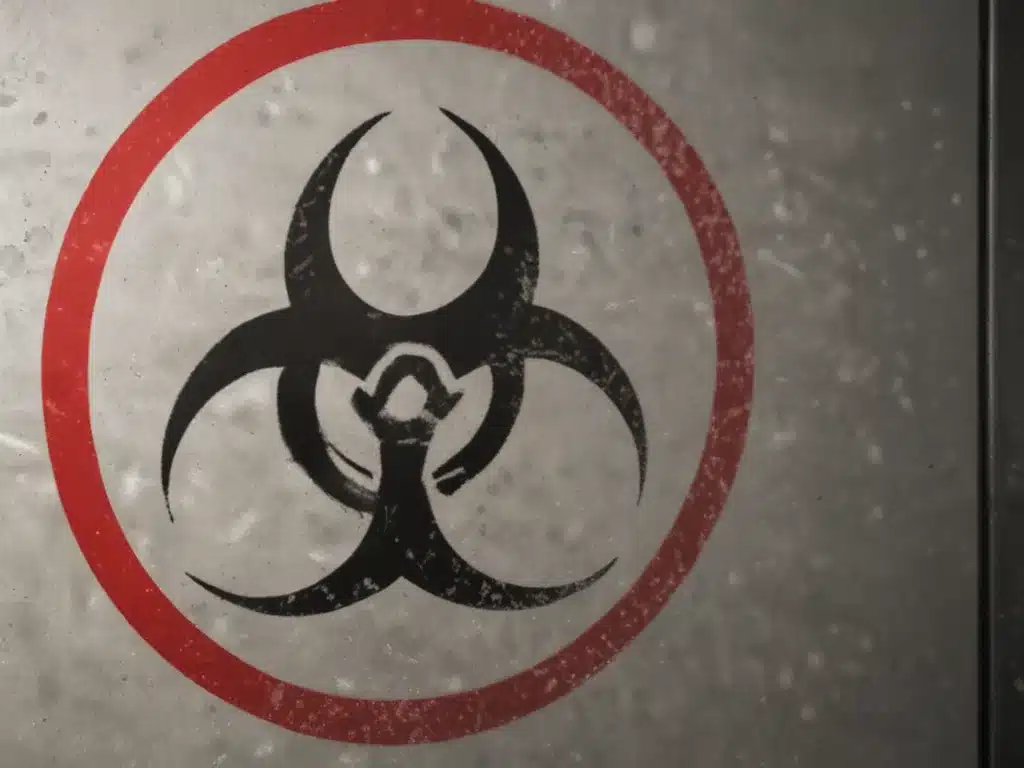Introduction
Biological materials such as infectious agents and toxins can pose significant risks to human health and safety. To help identify and mitigate these risks, biohazard materials are categorized into four risk groups based on their relative level of risk. Understanding these biohazard risk levels is important for researchers, lab workers, public health officials, and others who may encounter or work with potentially hazardous biological agents.
What are Biohazards?
Biohazards, also known as biological hazards, refer to biological substances that pose a threat to living organisms, primarily humans. Biohazards can include:
-
Infectious agents such as bacteria, viruses, parasites, and fungi that can cause disease in humans, animals, or plants. Examples are Salmonella, influenza virus, malaria parasite.
-
Toxins which are poisonous substances produced by living organisms. Examples are botulinum toxin, ricin, mycotoxins.
-
Allergens which are substances that can cause allergic reactions. Examples are proteins from peanuts, shellfish, pet dander.
-
Carcinogens or cancer-causing agents such as asbestos fibers, benzene, radon gas.
Proper identification, handling, and containment of biohazards are crucial to protecting human and environmental health. Mishandling biohazards can lead to accidental infections, toxicity, allergic reactions, or other adverse effects.
Biohazard Risk Groups and Levels
Biohazards are categorized into four risk groups based on their relative level of risk:
Risk Group 1 (Low Individual and Community Risk)
This group includes biological agents that pose low risk to individuals and communities. Examples are:
- Cell lines like CHO, 3T3, Vero cells
- Bacillus subtilis, Saccharomyces cerevisiae (baker’s yeast)
- Viruses like adeno-associated viruses (AAV) types 1 through 4
These agents are unlikely to cause human disease. Work can be performed safely on open bench tops using standard microbiological practices.
Risk Group 2 (Moderate Individual Risk, Low Community Risk)
This group includes agents that pose moderate risk to individuals but low risk to the community. Examples are:
- Salmonella, Listeria monocytogenes, Toxoplasma gondii
- Hepatitis A, B, C viruses
- Rhinoviruses, influenza viruses A & B
- Human blood, tissues, and cell lines like HeLa, Hep2
Work requires BSL-2 containment including proper PPE, proper disinfection and medical surveillance of lab personnel.
Risk Group 3 (High Individual Risk, Low Community Risk)
This group includes agents with potential for aerosol transmission that can cause serious disease. Examples are:
- Mycobacterium tuberculosis, St. Louis encephalitis virus
- Yellow fever virus, West Nile virus
- SARS coronavirus
- HIV, Hepatitis C, D viruses
Handling requires BSL-3 containment, worker training, and controlled access.
Risk Group 4 (High Individual and Community Risk)
This group includes agents that pose high risk of life-threatening disease which can spread in the community. Examples include:
- Ebola, Marburg, Lassa viruses
- Smallpox virus (Variola)
- Hendra, Nipah viruses
Work requires maximum containment at BSL-4 with strictly controlled access.
Biocontainment Strategies
To safely handle biohazards, laboratory containment and work practices are implemented according to the risk groups. The CDC has designated four biosafety levels (BSL) for work with biohazards:
-
BSL-1: For low risk agents, standard microbiology lab practices.
-
BSL-2: For moderate risk agents, includes physical barriers like biosafety cabinets along with personal protective equipment (PPE), controlled access, etc.
-
BSL-3: For high risk agents, includes BSL-2 measures plus HEPA-filtered ventilation, facility barriers, respiratory protection, etc.
-
BSL-4: For the highest risk agents, maximum containment with dedicated facility, isolation barriers, full-body PPE with air supply, extensive personnel training.
Matching the biocontainment level to the risk group of infectious agents or toxins is critical for safe research and diagnostic work.
Conclusion
The four biohazard risk groups provide a framework for assessing the relative risks of biological agents based on their potential to cause human disease. Understanding risk groups helps guide appropriate safeguards including biosafety levels, laboratory practices, PPE, and training. Proper risk assessment and containment of biohazards is vital to balance scientific work while minimizing risks to workers and the public. As new emerging pathogens appear, their appropriate risk group assignment will continue to evolve to protect human health.







